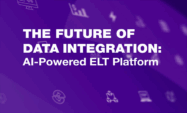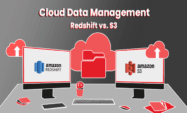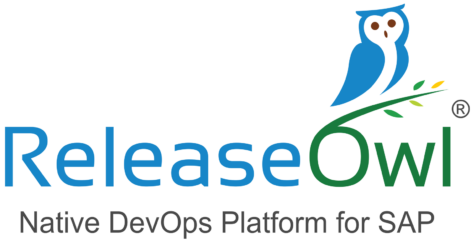SAP Data Integration
Filter By
Browse By
- SAP Analytics and AI
- SAP Application Development and Integration
- All SAP Application Development and Integration
- SAP ABAP
- SAP ABAP Development Tools
- SAP ABAP Test Cockpit
- SAP API Management
- SAP BAPI
- SAP Basis
- SAP BRF
- SAP Business Application Studio
- SAP CMS
- SAP Design Studio
- SAP Development Tools
- SAP DevOps
- SAP EAI
- SAP EDI
- SAP Extension Suite
- SAP Fiori
- SAP Fiori Elements
- SAP Integration Suite
- SAP Low Code Application Development
- SAP Low Code Automation
- SAP Netweaver
- SAP Release Management
- SAP UI5
- SAP Web Application Server
- SAP Web IDE
- SAP Business Process Management
- SAP Center of Excellence
- SAP CIO
- SAP Customer Experience
- SAP Data and Data Management
- All SAP Data and Data Management
- SAP BW
- SAP BW/4HANA
- SAP Crystal Reports
- SAP Data Archiving
- SAP Data Center
- SAP Data Governance
- SAP Data Integration
- SAP Data Migration
- SAP Data Quality
- SAP Data Services
- SAP Data Strategy
- SAP Data Visualization
- SAP Data Warehouse Cloud
- SAP DMS
- SAP Document Control
- SAP EIM
- SAP ETL
- SAP ETL Tools
- SAP HANA
- SAP HANA Administration
- SAP HANA Deployment Infrastructure
- SAP HANA Studio
- SAP Master Data
- SAP Master Data Governance
- SAP MDM
- SAP Enterprise Architect
- SAP Enterprise Asset Management
- SAP ERP
- SAP Finance
- All SAP Finance
- SAP Accounting
- SAP AR AP
- SAP Asset Accounting
- SAP Billing Systems
- SAP BPC
- SAP BRIM
- SAP Cash Management
- SAP Central Finance
- SAP Controlling
- SAP COPA
- SAP Cost Center Accounting
- SAP Currency Risk
- SAP e-invoicing
- SAP FICO
- SAP Finance Automation
- SAP Advanced Financial Closing
- SAP Financial Consolidation
- SAP Financial Planning
- SAP FX Risk
- SAP General Ledger
- SAP Global Tax Management
- SAP Hyperion
- SAP Order to Cash
- SAP Payment Processing
- SAP Profitability Analysis
- SAP Rebate Management
- SAP S/4HANA Finance
- SAP SWIFT Compliance
- SAP Treasury Management
- SAP Universal Journal
- SAP Governance Risk and Compliance
- SAP Human Capital Management
- SAP Intelligent Technologies
- SAP Platform and Technology
- All SAP Platform and Technology
- SAP Business Technology Platform
- SAP Cloud
- SAP Cloud Connector
- SAP Cloud Integration Platform
- SAP Cloud Migration
- SAP Cloud Platform
- SAP Cloud Providers
- SAP Cloud Strategy
- SAP Digital Signature
- SAP Container Platform
- SAP HANA Enterprise Cloud
- SAP Digital Asset Management
- SAP Smart Forms
- SAP HEC
- SAP Digital Integration Hub
- SAP Hyperscalers
- SAP Infrastructure
- SAP Messaging
- SAP Quality and Testing
- SAP Security
- SAP Spend Management
- SAP Supply Chain Management
- All SAP Supply Chain Management
- SAP APO
- SAP Asset Management
- SAP Business Network
- SAP Digital Manufacturing Cloud
- SAP Digital Twin
- SAP EWM
- SAP IBP
- SAP Inventory Management
- SAP Label Printing
- SAP Logistics
- SAP Manufacturing
- SAP Manufacturing Automation
- SAP MES
- SAP MII
- SAP MM
- SAP MRO
- SAP MRP
- SAP Order Management
- SAP Plant Maintenance
- SAP PLM
- SAP Production Planning
- SAP S&OP
- SAP SD
- SAP SPM
- SAP Supply Chain Planning
- SAP Track and Trace
- SAP Transportation Management
- SAP System Administration
What is Data Integration?
Data integration is the process of providing a single, unified view of information by combining data that resides in different sources. The process of data integration involves a set of practices, tools, and architectural procedures.
Data integration has become a business imperative as organizations see competitive advantage in data quality, data governance, data modeling, and the challenges of isolated or siloed data. The extract, transform, load (ETL) process is a commonly used data integration model.
SAP offers a suite of data integration tools. These tools are available on premise or in the cloud and cover a variety of different use cases. Data integration tools provided by SAP include SAP Data Services, SAP Cloud Platform Integration for data services, SAP HANA smart data integration, SAP Cloud Platform smart data integration, SAP Landscape Transformation Replication Server, and SAP Data Hub.
Vendors like Qlik, Quickbase, Stonebranch, Boomi, and TIBCO provide data integration capabilities for SAP customers.
What is Data Integration?
Data integration is the process of providing a single, unified view of information by combining data that resides in different sources. The process of data integration involves a set of practices, tools, and architectural procedures.
Data integration has become a business imperative as organizations see competitive advantage in data quality, data governance, data modeling, and the challenges of isolated or siloed data. The extract, transform, load (ETL) process is a commonly used data integration model.
SAP offers a suite of data integration tools. These tools are available on premise or in the cloud and cover a variety of different use cases. Data integration tools provided by SAP include SAP Data Services, SAP Cloud Platform Integration for data services, SAP HANA smart data integration, SAP Cloud Platform smart data integration, SAP Landscape Transformation Replication Server, and SAP Data Hub.
Vendors like Qlik, Quickbase, Stonebranch, Boomi, and TIBCO provide data integration capabilities for SAP customers.
Benefits of Data Integration
In addition to consolidating information, data integration can also ensure that the data is clean, accurate, and enhanced for business use. It is also an important component to any effective data management strategy, and can help companies optimize analytics, ensure consistency between operational applications, share data outside of the organization, coordinate data services, and support data migration and consolidation.
Key Data Integration Considerations for SAPinsiders
- Include end users in decisions about data integration. TIBCO’s Senior Solution Engineer Iain Harfield explains that while the primary decision makers for integration strategies are often those in charge of lines of business with enterprise architects driving the implementation strategy, end users also play a pivotal role in building our an integration strategy. “…not including them in the process can put an organization at risk of providing solutions that fall short of addressing business challenges,” Harfield says.
- Blend SAP ERP data with non-SAP source data. SAPinsider’s 2021 integration research revealed that 90% of respondents need to integrate non-SAP data with their SAP data. In an SAPinsider thought leadership article, Qlik’s Vice President of SAP Business Matthew Hayes discusses the endless ways a business can benefit from integrating SAP ERP data with non-SAP source data. “The irony is that SAP data becomes more valuable if you expand it with related data from other sources,” Hayes says.
- Deploy data lakes and data warehouses in the cloud. SAPinsider’s Data Management and Data Warehousing in Cloud Benchmark Report found that deploying data in a hybrid model was a popular choice for analytics, ERP, and supply chain data. To mitigate the challenge a hybrid model can pose from an integration standpoint, SAPinsider recommends that integration be achieved, in part, by moving data into a centralized cloud data lake or data warehouse.
22 results
-

Lay The Foundation With A Flexible Data Infrastructure For AI
Reading time: 1 min
AI is reshaping enterprise data environments, necessitating scalable, high-performance infrastructure capable of seamless hybrid integration to support demanding AI workloads while ensuring energy efficiency, security, and governance.
-

Making your SAP Integration Serverless
A demo showing how to Integrate SAP with 3rd party services using Camel K with Knative Eventing as well as Kamelet to bind to Telegram.
-

Unlocking SAP Hyperproductivity: Introducing Boomi SAP Agents for Autonomous Productivity at Scale
September 25, 2025
Take the lead in agentic transformation by unlocking SAP hyperproductivity with Boomi SAP Agents. Boomi for SAP is a SAP-certified native integration that helps easily connect your SAP data including SAP ECC, SAP S/4HANA, and SAP BW to the rest of your organization. Fast-track integration and automate each part of your business responsibly when pairing…
-
-

The Future of Data Integration: AI-Powered ELT Platform
Reading time: 1 mins
Precog’s AI-powered ELT platform made connecting all of Biamp’s data easy. In fact, Precog reduced time to value for critical data connections by 30–50 percent.
-

Efficient SAP Data Integration with Amazon Redshift & Amazon S3
Reading time: 6 mins
The article discusses how Xtract Universal integrates with Amazon Redshift and S3, enabling effective SAP data extraction by guiding businesses in selecting the appropriate AWS service for their specific data management and analysis needs.
-

Boomi World 2025 is “Unlimited”
Reading time: 3 mins
Steve Lucas, CEO of Boomi, introduced the ‘unlimited’ theme at Boomi World 2025, emphasizing the significance of AI in organizational transformation and the evolution from integration to orchestration, while unveiling new tools for AI agent management and announcing the acquisition of the managed file transfer platform Thru.
-

How Suzano Achieves Lasting Success with Google Cloud Cortex Framework
The Google Cloud Cortex Framework enhances operational efficiency and decision-making for organizations by integrating data, driving innovation, and providing scalable solutions, as demonstrated through real-world examples of successful enterprise applications. Fill in the form below to watch the video.
-
-

Effortless SAP Data Integration: One Connect & Databricks in Action
The video demonstrates how One Connect and Databricks collaborate to simplify and expedite SAP data integration, facilitating real-time data access and accelerating insights for businesses.
-

Boomi CEO Steve Lucas on Integration and AI innovation
Reading time: 11 mins
Boomi CEO Steve Lucas on being inspired by sports cars and the need for new ways to tackle complexity in the age of AI.
-

Tackling Data Integration Challenges in SAP and non-SAP Systems
Reading time: 1 mins
Overcome data integration challenges in SAP with effective strategies by discovering how to integrate diverse applications and data sources.
Become a Member
Unlimited access to thousands of resources for SAP-specific expertise that can only be found here.
Become a Partner
Access exclusive SAP insights, expert marketing strategies, and high-value services including research reports, webinars, and buyers' guides, all designed to boost your campaign ROI by up to 50% within the SAP ecosystem.
Upcoming Events
Related Vendors
Your request has been successfully sent


